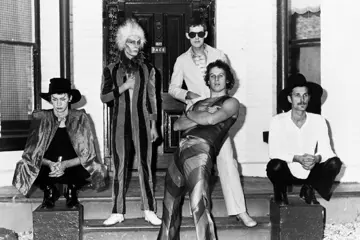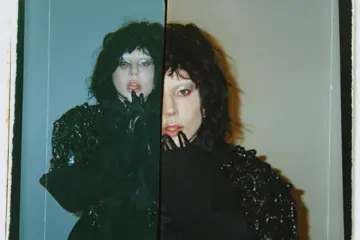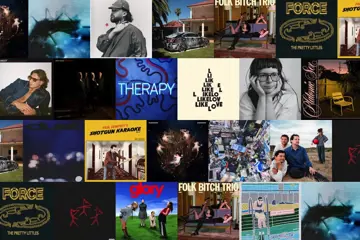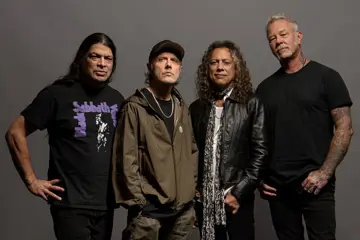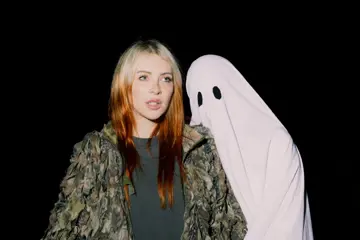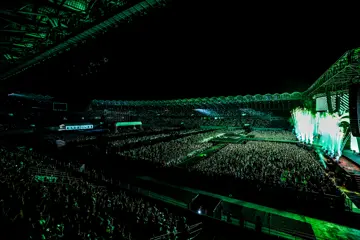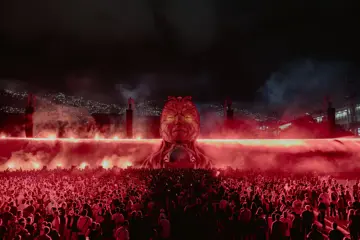Video artist Arthur Jafa came into the public eye as a cinematographer working with directors like Julie Dash and Spike Lee, and on a number of music videos, including on Solange’s Cranes In The Sky and Jay-Z’s 4:44.
But his gallery breakthrough came with the exhibition of his seven-minute video essay, Love Is The Message, The Message Is Death in New York in November 2016, a series of found images and footage of Black history and culture, set to Kanye West’s Ultralight Beam.
Arthur Jafa’s Love Is The Message, The Message Is Death, screens as part of Vivid LIVE’s The Hidden Pulse program of screenings and panel discussions at Sydney Opera House, produced in collaboration with Hong Kong’s M+ museum of visual culture. After the screening, Jafa will also appear in conversation with Sydney artist and curator Brook Andrew.
Jafa says choosing Ultralight Beam to score his work was “very intuitive” – he had already cut together Love Is The Message, The Message Is Death when he saw West perform the track on Saturday Night Live in February 2016.
“I think in some ways there's a tension between the song and the images because the images didn't follow the song, you know what I mean?”
He describes it as though the images and the song are “in dialogue”, and calls West’s song a “real innovation in terms of gospel music”, noting its unusual construction, which utilises staggered rhythms at the same time as the traditional intonation of gospel music: “It's an incredible song, above and beyond that – it's an amazing song.”
Still, you won’t find the Love Is The Message, The Message Is Death Ultralight Beam mix on Spotify.
“Somebody asked me [once], 'Where can I get that mix?' and I was like, 'That mix doesn't exist.' It only exists in the film because something about the haunting quality of it structurally allowed me to break it up and move it around in the way that I wanted to. So you have different things coming in and out over the course of it.”
While the content of Jafa’s video essay has been described as reclaiming Black identity from unjust media representations, Jafa stresses his artistic impulse was not “corrective”.
“I'm just basically choosing images that to me resonate and that I recognise as being true,” Jafa explains. “I'm not trying to pick something that I think sort of goes against the grain or anything like that. It's less what I'm doing than the things that I'm refusing to do. What I'm refusing to do is to select images that are about explaining Black people to white folk or something like that.
“My criteria for choosing things is that they're dope, and that they're magical, and that they in some way or another seem true. So with Love Is The Message... I know there's been a tendency to sort of frame it in socio-political terms – which you can certainly look at it that way – but I feel like it's really about trying to figure out how to embody diverse and complex realities of Black being: it's not all suffering, it's not all joy, it's some sort of complicated oscillation between those two polarities.”
"I was just thinking of it in terms of stringing things together that I thought were interesting or disturbing or provocative or beautiful.”
Love Is The Message, The Message Is Death collages together historical footage, contemporary footage, and Jafa’s home movies of “my daughter getting married, my son running and jumping, my mum dancing at a wedding – things like that”.
He says that when he started to collect the images and footage that would become a part of the film, he wasn’t yet thinking of a larger work. He would just save them to his files, aware that footage uploaded to social media or YouTube is impermanent – it would “come and go”, sometimes being banned by its host platform: “It had to do with saving them so if I ever wanted to see them again, I could.” Only later would Jafa lay the images and video down on a timeline.
“A lot of the things that I've done like Love Is The Message or [2013’s] APEX or something like that, they're essentially slideshows and then at some point someone said, 'Oh, that's a movie.' I really wasn't initially even thinking of it in those terms. I was just thinking of it in terms of stringing things together that I thought were interesting or disturbing or provocative or beautiful.”

Arthur Jafa, Love Is The Message, The Message Is Death (2016). Courtesy the artist and Gavin Brown's enterprise, New York/Rome. Image via Vivid.
While some might imagine it’s difficult to be constantly faced with images of police brutality or Black suffering, the 58-year-old Jafa seems nonplussed. Instead he points to the process of scrapbooking and collage – “collect[ing] images of stuff” – as something he has done since he was five years old.
“I think most people when they see things that they're disturbed by they recoil from them, but I've, in a sense, wired myself over the last 30 years or so to push towards things that disturb me or I'm intrigued by. More often than not I don't know why it is I'm saving a particular image.”
Once Jafa had collated and arranged all the footage and images, he thought, "Wow, this is kinda interesting, kinda intense.” Still, he never predicted the kind of impact it would have not only on Black audiences, but on non-Black people.
“I kinda felt like pretty early on that Black folk would respond to it or would find it provocative, but I certainly never anticipated the general response to it. It just never occurred to me that non-Black or white audiences in particular would be moved by it to the degree that they have. It wasn't that I didn't think it was possible – it just never even occurred to me.”
Jafa had intended to simply upload the work to YouTube, but was convinced by friends to consider a gallery context instead. His friend, artist Kahlil Joseph, took a copy of Love Is The Message, The Message Is Death to Art Basel in Switzerland in June 2016, where he screened it ahead of his original, never-before-seen, director’s cut of Beyonce’s Lemonade film. From there, Jafa's work was picked up by the high art world, which was something he had never expected.
“It just all happened very, very abruptly and very spontaneously. There was no preconceived—it's just a confluence of things happening. Even when it was going down it seemed so uncanny in a way. But I definitely feel very blessed that it has been received the way it has. It certainly changed my life in some very concrete kinds of ways.”

Arthur Jafa






